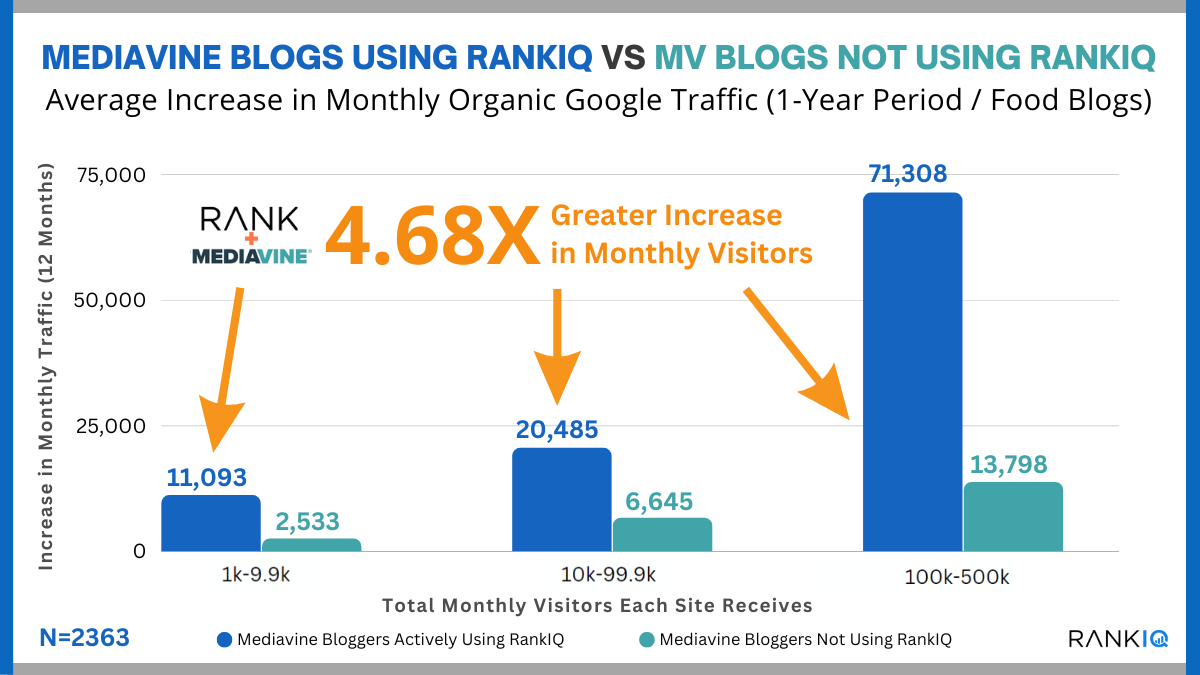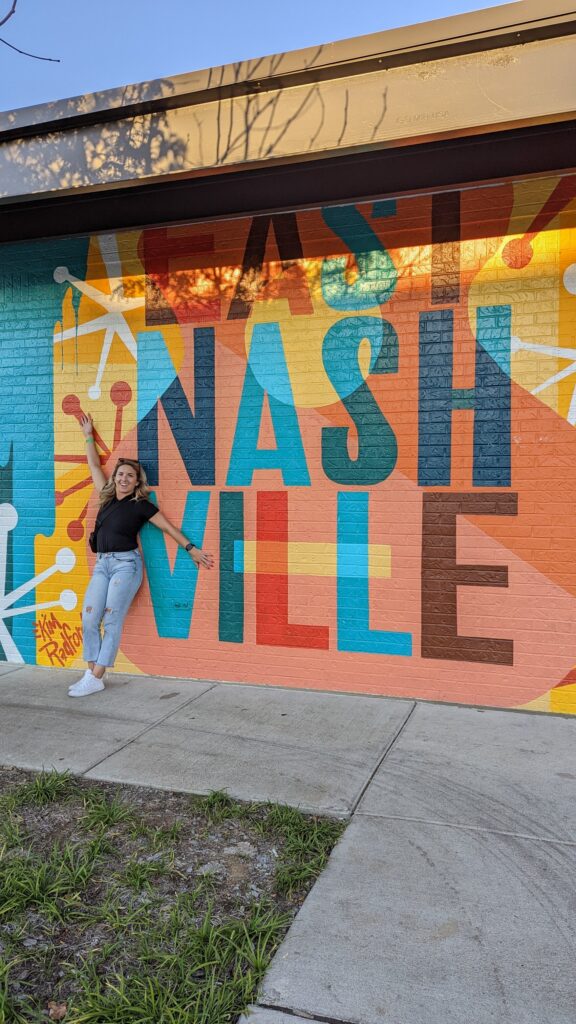Mastering SEO for travel bloggers is all about understanding what the user is searching for but also pinpointing exactly how much or how little the user already knows.
When it comes to Search Engine Optimization in the travel industry, it’s important to balance the art of captivating storytelling with the science of strategic keyword optimization – all while providing the most useful and up to date information for the reader.
I started my first travel blog in 2019 without any knowledge of SEO.
I spent thousands of dollars (and hours) on courses and e-books, and now I make a consistent $20,000 per month.
After all those courses and e-books and implementing their strategies (and lots of trial and error), this post details everything I’ve learned about SEO to make five-figures per month with my travel blog.
This post contains affiliate links, meaning if you click through and make a purchase I may make a small commission. I only share information about things I know, love and trust!
Everything You Need to Know About SEO for Travel Bloggers
What is SEO in the Context of Travel Blogs?

SEO, or Search Engine Optimization, is the process of optimizing each of your blog posts and website as a whole to improve its visibility in search engine results pages (SERPs) when users search for travel-related information, destinations, or topics.
In other words, SEO is like a secret code that helps your travel blog show up when people search for travel-related information on the internet, like travel tips or things to do in a certain city.
The primary goal of SEO for travel blogs is to attract organic (non-paid) traffic to your blog by ranking higher in search engine results, such as Google, Bing, or Yahoo.
SEO is like making your blog more attractive and easy to find on the internet so that when people are looking for travel advice, guides or stories, they can easily find and enjoy your blog.
Understanding the Importance of SEO for Travel Blogs

Understanding SEO for your travel blog is like knowing how to put up signposts and maps to help people find your awesome travel content and stories on the interest.
Here’s why it’s important:
Get More Visitors to Your Website
When your blog is easy to find on search engines like Google, more people will visit it.
The number one way to make money with your travel blog is to get traffic (visitors) to your website.
The most effective way to do this is through SEO.
Make Money
The more people that visit your website, the more money you can make from display ads, affiliate marketing and selling your products and services.
Build Your Blog’s Reputation
If your blog shows up high in search results, it looks trustworthy and reliable.
People are more likely to trust and read blogs that appear at the top of search engine results.
This can help you build a community which you can leverage to generate even more income.
Building a community could include creating an email list or a Facebook group.
How to Implement SEO on Your Travel Blog

Keyword Research & Understanding Search Intent
This means identifying relevant keywords and phrases that travelers are searching for.
This includes researching popular travel destinations, topics, and long-tail keywords specific to your niche.
You also have to pair this with understanding a searcher’s intention with that keyword.
Examples of Understanding Keyword Intent
Let’s look at an example of two similar keywords:
- Things to do in NYC
- Places to visit in NYC
While they might seem like you could write about the same things, put yourself in the shoes of someone who typed into Google each of those phrases.
The first keyword will show you a massive list of all the bucket list worthy things to do & experience in NYC.
The second keyword’s intent is mostly about all the sightseeing attractions in NYC.
See the difference?
If someone is searching for the first keyword, you don’t want to write a post that lists places to visit and the top attractions.
You want to include things like actionable activities, such as skating in Rockefeller square at Christmastime.
Use a Keyword Research Tool
Now, how do you actually find keywords to write about on your travel blog? You need a keyword research tool.
In 2024, there are hundreds of thousands of travel blogs on the internet, and you’re never going to compete with any of them if you’re not using a paid tool.
The good news is that you only need 2 tools to get started, and they’re affordable.
RankIQ

First, you need to sign up to RankIQ.
This is a database of hand selected low-competition keywords.
Right now, there are over 75,000 low-competition keywords for travel blogs alone.
The best part is that these keywords have already been vetted.
Every single keyword in this database can be used by a beginner travel blogger.
The best thing you can do to generate traffic to your travel blog through SEO is to identify low-competition keywords that you can rank for.
The above image shows Mediavine blogs using RankIQ increased their Google traffic 468% more than the Mediavine blogs not using RankIQ.
(by the way, once you have enough traffic to apply for Mediavine, you’ll instantly be making at least $1000 per month).
In the beginning of your travel blogging days, this will be the only way to grow.
You’ll never be able to rank for a keyword like “things to do in NYC.”
But, you have a high chance of ranking for the term “things to do on a rainy day in NYC.”
(p.s. That’s a keyword I quickly found from RankIQ).
Get immediate access to over 75,000 travel keywords now with RankIQ.
Keysearch
Keysearch is the second keyword research tool you need for your travel blog.
It provides insights into keyword search volume, competition, and other important metrics to identify valuable keywords to target (such as all the other related terms you should include in your post).
It also offers features for competitor analysis, tracking keyword rankings, and discovering new keyword ideas.
Sign up for Keysearch here – get 20% off with discount code KSDISC.
Give the User Exactly What They’re Looking For
Once you’ve identified the keyword you’re targeting, you need to give the reader exactly what they want to know.
This is what Google considers to be helpful content.
You need to write a blog post that targets your keyword and matches what the user is really searching for.
Provide only the information that would be helpful to them, and nothing that’s irrelevant.
You don’t need to fill your post with fluff.
Provide useful and helpful information that surrounds every point related to that keyword.
You can do this by providing your own insights and experiences or helpful tips that the person might not have thought about when researching that keyword.
Demonstrate Experience, Expertise, Authoritativeness and Trustworthiness

Now, you can have done all this great work at identifying low competition keywords and written a great post, but you also need to demonstrate EEAT.
EEAT stands for Experience, Expertise, Authoritativeness and Trustworthiness.
This is what Google looks for when it’s determining which websites to put at the top of Google search results.
You need to demonstrate EEAT in not only in every single one of your posts, but also your entire website as a whole.
How to Demonstrate Experience in Your Travel Blog
You can do this by using your own original photos of you in the destination, at the hotel or using the actual product.
In your writing, share personal stories, something you learned, something you didn’t expect or your personal restaurant recommendations (and even specific dishes to try).
Provide opinions on places you’ve visited or share a story about something that happened to you while you were there.
How to Demonstrate Expertise in Your Travel Blog
This can be done in your ‘About Me’ page’
Create a biography about why you’re an expert in the travel sub-niche that you chose. Explain to the reader how you become so knowledgeable on this topic.
You should also include a brief author bio with every blog post (usually at the end of the post).
How to Demonstrate Authoritativeness in Your Travel Blog
The biggest way to demonstrate you are an authority in your travel niche is to write every single type of post around a certain topic.
You want to cover everything a visitor might need to know and search for.
If your blog focuses on NYC for example, you’ll want to create these type of posts:
- NYC travel guide
- Visiting NYC: first timers guide
- Things to do in NYC (and variations of this: for free, for families, in 24 hours, etc)
- Best hotels to stay in NYC
- NYC neighborhood overview for visitors
- Reviews of individual attractions
- Day trips from NYC
- And more!
You can further demonstrate authoritativeness with your travel blog by connecting your blog to other platforms.
The best way to do this is to have a YouTube channel that discusses your blog posts more in depth.
It also helps to have social media profiles where you share additional tips, information and visuals (e.g., Instagram, TikTok, Facebook, etc.).
How to Demonstrate Trustworthiness in Your Travel Blog
If you can create and sell products, this is huge!
It means you know enough about a certain topic or destination that you can create a product that people are willing to pay for. This helps build trustworthiness.
Provide a User Friendly Experience

The biggest thing to remember is that you’re truly writing for people first, Google second. But there’s still a fine line to balance.
This is where the importance of user experience comes into play for SEO for your travel blog.
When a user lands on one of your blog posts, it should be a pleasant experience. This means:
Page speed: you want your website to load fast. People click off in less than 2 seconds if your website is too slow.
Mobile friendly: Over 80% of search traffic is on a mobile device. Before you publish a post, take a look at what it looks like on a mobile device.
Clear navigation: make sure your website’s layout and menu make sense and are easy to understand.
Readable Fonts: Use legible fonts and maintain a good font size for your text. Ensure there’s enough contrast between the text and background colors to make reading easy.
Well-Structured Content: Organize your content with headings, subheadings, and bullet points. This makes it easier for visitors to skim and find the information they want.
Security: Ensure your website is secure, especially if you handle sensitive information like user data or payment details. Use HTTPS and keep your software and plugins up to date.
Publish Better Content Than Your Competitors
Producing high quality content is still the best way to get your travel blog post to rank.
If you’ve found your target keyword, have a well-structured post with clear headings and have similar blog posts that are related to that subject – you still need to create better content than anyone else.
First, for people to potentially click on your blog post, you need to be within the top 3 search results on Google.
To do that, you’ll need to have better content than those first 3 posts (and if there’s a snippet that shows up at the top).
Thoroughly analyze each of these other posts. Read through them and write down their headings, sections and the information and content they’ve included. This also includes images and videos.
Because if Google has pushed these 3 blog posts to the top, it means Google has signaled that these posts have high quality content that fully satisfies the user’s search intent.
So you need to create a post that’s better than all 3.
First, make your title better and more catchy.
Make sure you’ve included all the information that the 3 posts cover (without plagiarizing of course).
Now add in additional information that’s not included.
Add your own personal recommendations, tips, things to consider, and better photos and embed your own videos if you have a YouTube channel that discusses this topic.
Add Video Content
Video content continues to grow in popularity when it comes to consuming travel content.
In fact, YouTube videos are now showing up in the first few search results on Google (depending on the topic).
One of the best ways to get an SEO boost to your travel blog is to create YouTube videos that complement your existing posts.
Additional On Page SEO Tips for Travel Bloggers

There’s also a few technical things to finish off your full SEO checklist for your travel blog.
Image file names
Make sure each image you use has a file name with a keyword. Don’t make it the keyword you’re targeting, but it should complement your blog post. It still needs to describe the image.
For example, an SEO-optimized image file name would be something like: empire-state-building-in-september.
Meta descriptions
A meta description is like a short summary or preview of what your blog post is about.
It’s a brief description that appears in search engine results when people look for information online.
Think of it as a tiny advertisement that tells readers what they can expect if they click on your blog post.
It’s important because if your title isn’t convincing enough, it can help people decide if your post is what they’re looking for, so they might visit your blog to read more.
The recommended length for a meta description is typically around 150 to 160 characters and you can use the Yoast plugin on WordPress to easily create this.
Here’s are some examples of an SEO-optimized meta description for a travel blog post that is targeting the keyword “things to do in NYC on a rainy day”:
- Discover indoor delights! Our guide to things to do in NYC on a rainy day will make your visit unforgettable. Stay dry, explore, and have a blast
- Rainy day in NYC? No problem! Explore our top picks for indoor fun. From museums to cozy cafes, make the most of your day in the city
- Enhance your NYC experience on a rainy day. Explore our curated list of indoor activities and cultural attractions. Plan your perfect rainy day itinerary today
Permalinks
A permalink is like the internet address or URL for a specific page on your blog. It’s the link that people click on to visit that page.
Think of it as a home address for your blog posts.
Each blog post or page you create has its own unique permalink, which helps people find and share your content online.
Permalinks are important because they tell both your visitors and search engines where to find your blog posts on the internet.
They should be short, descriptive, and easy to remember to make it simple for people to access your blog content.
Here is an example of a permalink for a travel blog post:
- things-to-do-in-nyc-on-a-rainy-day
Ready to get started? Here are some articles to help you write your first travel blogs:
115 Travel Blog Post Ideas That Will Actually Rank
17 Travel Content Ideas That Will Rank Fast and Make You Money

